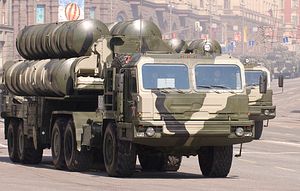China has made an advance payment under a contract made public in April 2015 for the procurement of four to six Russian-made S-400 Triumph (NATO reporting name: SA-21 Growler) missile defense systems, Rostec CEO Sergei Chemezov said in an interview with TASS.
“We still have to go through a whole number of formal procedures, which we have not yet completed, although we have already received an advance payment. I believe we’ll settle these procedures by the end of the year,” Chemezov, who heads Russia’s largest defense industrial conglomerate, explained.
Furthermore, Chemezov revealed that the first batch of S-400 air defense systems could be already delivered in the first quarter of 2017. China is the first international customer of Russia’s most advanced medium- and long-range antiaircraft missile system.
The head of Rostec did not disclose additional details about the weapons deal estimated to be worth $3 billion. As I noted previously, one of the major questions is what types of missiles Russia will sell to China for the three-tier air defense system.
For example, the 40N6 missile has an estimated operational range of 400 km (248.5 miles), however, the 48N6 missile has a more limited range estimated at around 250 kilometers (155 miles). It is not certain that the 40N6–developed by the Fakel Machine Building Design Bureau–is operational yet. The S-400 air defense system can also launch 9M96E and 9M96E2 medium-range ground-to-air missiles.
Should the 40N6 be operational by next year and should Russia decide to sell the missile to China, it would have major implications for Chinese force posture in the East China Sea and South China Sea, as Defense News explained back in April 2015:
The 400-kilometer-range system will, for the first time, allow China to strike any aerial target on the island of Taiwan, in addition to reaching air targets as far as New Delhi, Calcutta, Hanoi, and Seoul. The Yellow Sea and China’s new air defense identification zone (ADIZ) in the East China Sea will also be protected. The system will permit China, if need be, to strike any air target within North Korea.
However, in an analysis for The Diplomat, J. Michael Cole points out that the 40N6 missile would have to operate at the very edge of its range to cover the cities and places named above. Even if the 40N6 will not be sold to China, the stationing of S-400 batteries with more limited range–each S-400 unit consists of eight surface-to-air missile launchers, each equipped with 32 missiles–will substantially upgrade China’s overall anti-access/area-denial capability.
































